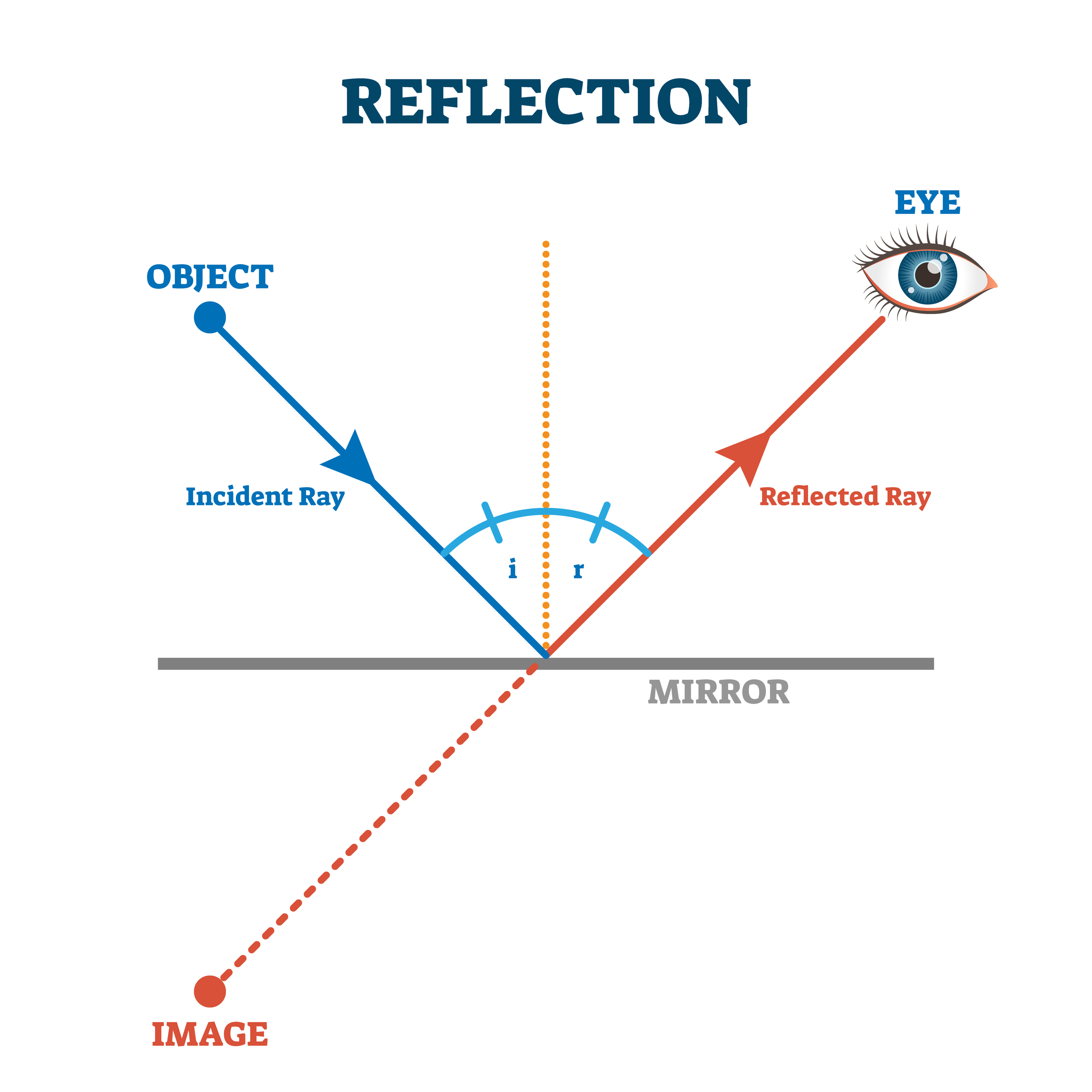
It explains why you can see a clear image of yourself in a shiny flat mirror, but not in a dull rough wall. Instead, the light is reflected in all directions. However, the different parts of the rough surface point in different directions, so the light is not all reflected in one direction. If light meets a rough surface, each ray obeys the law of reflection. The reflection of light from a flat surface such as a mirror is called specular reflection – light meeting the surface in one direction is all reflected in one direction. In the second example, if a light ray travelling along the normal hits a mirror, it is reflected straight back the way it came.

A ray diagram showing angle of incidence and angle of reflection. the dashed line is called the normal, drawn at 90° to the surface of the mirror Learn about the properties of light waves and how they can be reflected, refracted and.the hatched vertical line on the right represents the mirror.the reflected ray is the light coming away from the mirror.the incident ray is the light going towards the mirror.When light reaches a mirror, it reflects off the surface of the mirror: Remember to use a ruler and a sharp pencil.

with an arrowhead pointing in the direction that the light travels.A ray diagram shows how light travels, including what happens when it reaches a surface.


 0 kommentar(er)
0 kommentar(er)
